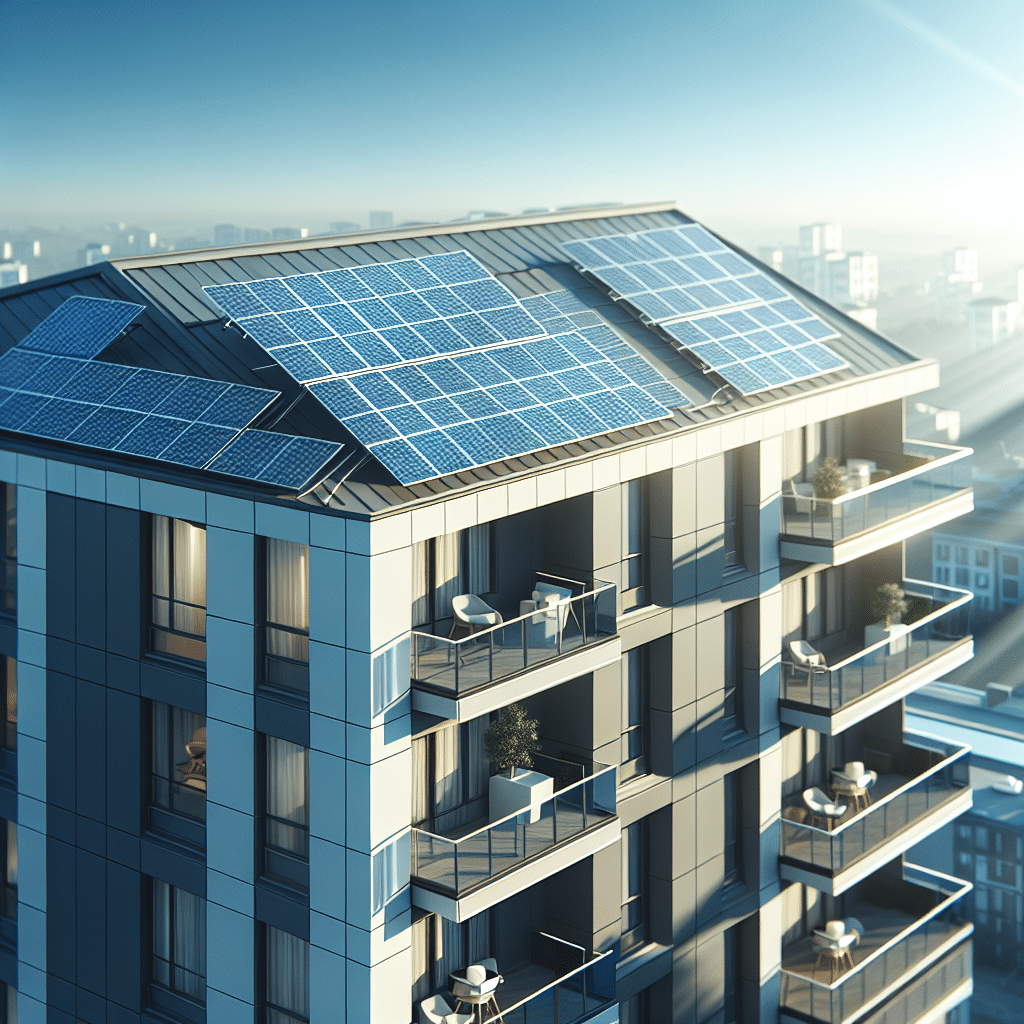Understanding Solar Mounting Systems for Apartments
1. Types of Solar Mounting Systems
Solar mounting systems are essential for optimizing the performance of solar panels installed on apartments. The two principal types include fixed tilt mounts and adjustable mounts.
-
Fixed Tilt Mounts: This is the most common type and is designed to hold solar panels at a specific angle to maximize sunlight exposure. Ideal for flat rooftops, fixed mounts are cost-effective.
-
Adjustable Mounts: These are versatile, allowing for angle adjustments throughout the year. By tracking the sun’s path, adjustable mounts can improve efficiency. However, they tend to be more expensive due to their mechanical components.
2. Flat Roof Mounting Systems
Many apartment buildings have flat roofs, which offer excellent opportunities for solar panel installation.
-
Ballasted Systems: These systems do not penetrate the roof but instead use weights to keep panels in place. Ballasted systems are faster to install and prevent roof damage.
-
Roof Penetrating Systems: For buildings where stability is a concern, penetrating mounts are ideal. They involve securing solar panels through the roofing material into the structural framework below.
-
Rooftop Solar Racks: These structures elevate solar panels, allowing for improved air circulation and panel cooling, which enhances efficiency.
3. Benefits of Solar Mounting Systems
Employing an appropriate solar mounting system offers multiple advantages to apartment residents and building owners.
-
Energy Independence: With solar panel installations, residents can reduce reliance on grid electricity and protect against rising energy costs.
-
Environmental Impact: Utilizing solar energy lowers the carbon footprint, contributing to a cleaner environment.
-
Increased Property Value: Apartments equipped with solar panels often have higher market values and appeal to environmentally-conscious buyers.
4. Key Considerations When Choosing a Solar Mounting System
Several factors should influence your choice of solar mounting systems for apartments.
-
Roof Type: Understanding the roof structure and materials (flat, sloped, or uneven) will impact the choice between fixed or adjustable mounts.
-
Local Regulations: Many municipalities have specific guidelines regarding solar panel installations, including zoning laws and aesthetic considerations.
-
Wind and Snow Load: Assessing the local climate is crucial. Solar mounting systems must comply with local codes for wind and snow loads, ensuring safety and effectiveness.
-
Orientation and Tilt: The orientation of the building can significantly influence solar energy generation. South-facing roofs usually optimize sunlight accessibility.
5. Installation Pairing with Solar Panels
Selecting the right solar panels is as crucial as the mounting system itself. When choosing panels, consider efficiency, warranties, and durability.
-
Monocrystalline vs. Polycrystalline: Monocrystalline panels are more efficient but come at a higher cost. Polycrystalline panels offer a budget-friendly option with slightly lower efficiencies.
-
Thin-Film Panels: While lightweight and flexible, thin-film panels require more space than crystalline options and are less efficient in terms of energy conversion.
6. Maintenance of Solar Mounting Systems
Regular maintenance is important for solar mounting systems to ensure longevity and performance.
-
Inspection: Periodically check for corrosion, loose connections, and general wear. Early detection helps preventive measures and prolongs the lifespan of the system.
-
Cleaning: Dust and debris can reduce system efficiency. Cleaning the panels and the mounting hardware periodically promotes optimal performance.
7. Innovative Solar Mounting Technologies
Emerging technologies are revolutionizing solar mounting systems, offering even more efficiency.
-
Building-Integrated Photovoltaics (BIPV): These systems incorporate solar technology directly into building materials, like windows or facades, thereby eliminating the need for additional mounting systems.
-
Solar Canopies and Carports: Innovative mounting options such as solar carports provide dual functionality, offering parking and energy generation while saving rooftop space.
8. Financial Incentives and ROI
Investing in solar mounting systems for apartment buildings often includes financial incentives offered by government programs.
-
Tax Credits: Many countries provide tax incentives for solar installations, which can significantly offset initial costs.
-
Net Metering: This enables residents to sell excess energy back to the grid, further supporting the financial viability of solar investments.
9. Collaborative Installations
Encouraging collaboration among residents can streamline the solar installation process.
-
Community Solar Programs: These programs allow multiple apartment owners to invest in a shared solar system, providing access to solar energy without the need for individual installations.
-
Lease Agreements: Property owners may consider leasing rooftops to solar companies, generating passive income while providing renewable energy access to tenants.
10. Future Trends in Solar Mounting Systems
The evolution of solar technology promises exciting advancements in solar mounting systems.
-
Smart Technology Integration: The integration of smart technologies to monitor output and optimize energy usage is on the rise. Homeowners can track energy consumption and system performance through smartphone applications.
-
Sustainability: The push for more environmentally friendly materials in construction, including solar mounting systems, is growing. Innovations in recycling and eco-friendly materials will likely shape future products.
Through careful consideration of these various aspects, apartment residents and owners can make informed decisions regarding solar mounting systems. The shift towards renewable energy, especially in urban settings, is not only feasible but increasingly essential.
